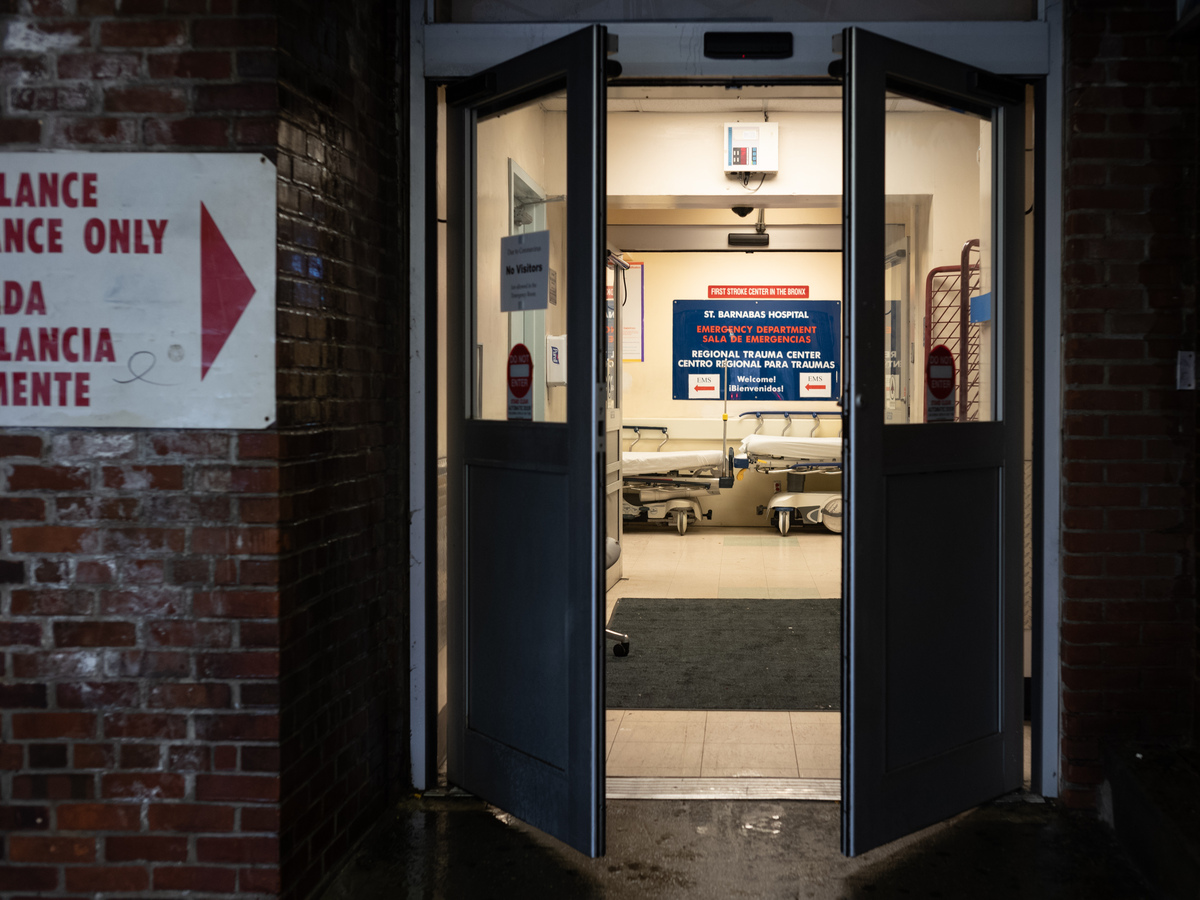
Doors lead into the Emergency Department at St. Barnabas Hospital on March 23, 2020 in New York City. Emergency rooms saw some of the most painful scenes of the pandemic and are still grappling with the consequences. Misha Friedman/Getty Images hide caption

Doors lead into the Emergency Department at St. Barnabas Hospital on March 23, 2020 in New York City. Emergency rooms saw some of the most painful scenes of the pandemic and are still grappling with the consequences.
Misha Friedman/Getty ImagesHospital emergency rooms saw some of the most painful scenes of the pandemic: beds filled to capacity, nurses and doctors risking sickness themselves, and patients dying without their loved ones.
Today, ERs are still living with the consequences of the pandemic. They face staffing challenges, patients who delayed care and arrive sicker, and the lingering emotional strain.
We visit an emergency room at a hospital outside Baltimore to hear how this moment looks to the doctors and nurses who work there.
Email us at
This episode was produced by Connor Donevan and Mallory Yu. It was edited by Jeanette Woods and Ashley Brown. Our executive producer is Sami Yenigun.

 Live Radio
Live Radio